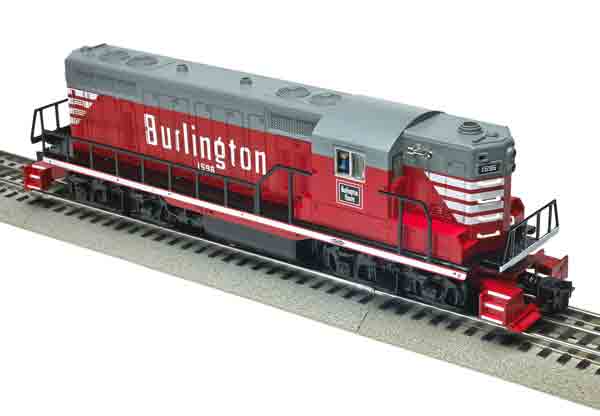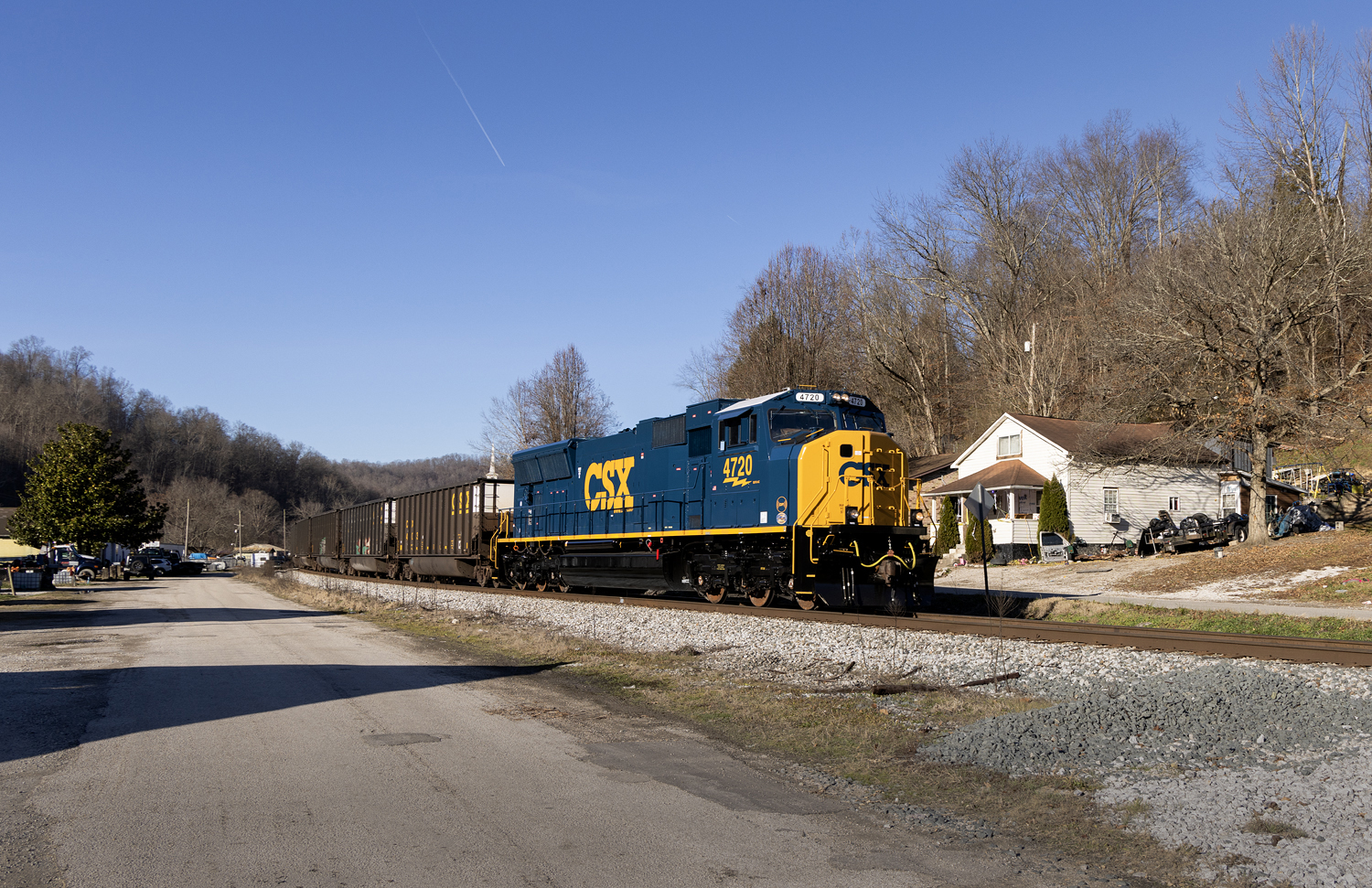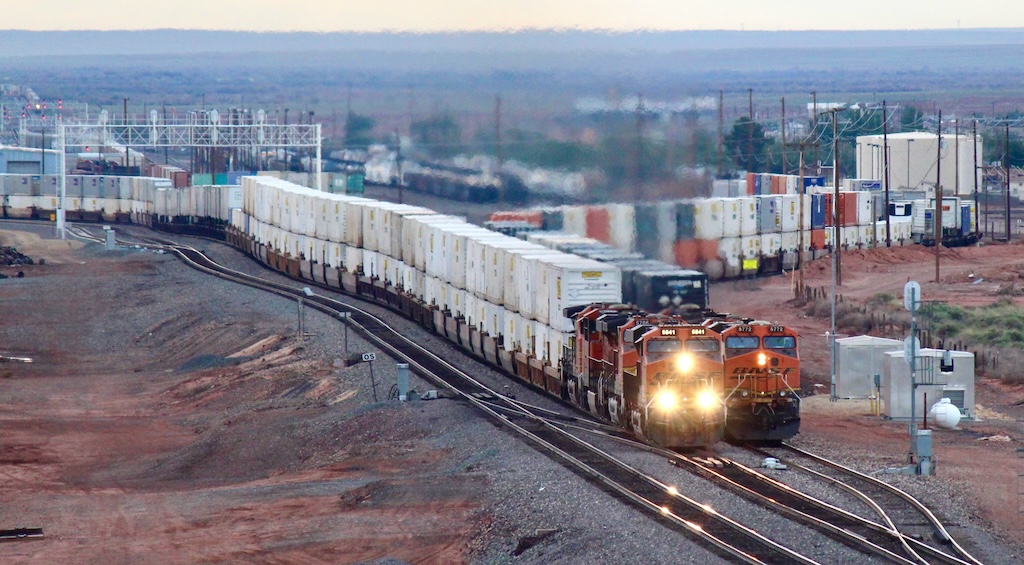Price: $329.99 (no. 38827) Burlington Route
Features: O-31 operation, metal frame and die-cast metal trucks and couplers. It is equipped with dual motors, coil couplers (controllable only via LionChief Plus remote), a fan-driven smoke unit, RailSounds RC with locomotive sounds and announcements, can be operated in conventional mode (though some LionChief Plus features cannot be controlled).
Current road names: Burlington Route, Northern Pacific, Santa Fe, and Union Pacific
The GP7 has been a battle-tested design in Lionel locomotive fleets for more than 60 years. Between GP7s and GP9s (in New York Central and Penn Central road names), I have six in my fleet, so I like the universal look of the model. The design is functional and as close to timeless as it gets. The GP7 model has been improved vastly both mechanically and electronically since it was introduced.
I was pumped up to receive a LionChief Plus GP7 in the Burlington Route’s China red paint scheme. Why? LionChief Plus gives you the option to run your diesel in conventional mode or enjoy the benefits of remote control without having to buy the equipment for a Lionel TrainMaster or Legacy system. The system is basically in the palm of your hand.
What are my high points for the LionChief Plus controller? Quick response to commands, the no-brainer forward-reverse and speed control, and easy whistle/bell/horn activation. Raising and lowering the volume with the controller is a little less intuitive, but it works.
Ideally, a basic system like LionChief Plus probably should have come before Lionel’s TrainMaster. If so, it may well have accelerated the acceptance and enthusiasm for command-control systems. The fact is that you probably couldn’t get to the uncomplicated LionChief system without having gone through the development of the more sophisticated TrainMaster and Legacy systems.
This system is less intimidating than their cable TV remote! What could be better for turning on newcomers with no model train background to the fun, and set the stage for new hobbyists who are ready for a control system.
The model
The GP7 is a basic model. The pilots have minimal detailing – a cast-in uncoupler arm and texture on the brakeman’s steps. The frame is stamped steel with safety tread texture, and the handrails are folded extensions of the steel frame.
The body of the GP7 captures most of the key details points of the prototype. The short nose has a two-lens headlight, number boards, and spots for marker/classification lights. There are add-on grab irons/steps leading up the nose. On top of the short hood are a cast-in grab iron, a sand filler hatch, and a cast-in vent for a steam generator. Door, latch, hinge, and louver details are cast into the body sides.
The top of the shell is fairly smooth with four cast-in fans and sand filler and grab iron on the opposite end. There are two short stacks for adding smoke fluid (you may use either). Always add smoke fluid before operating the engine with the smoke unit on.
The end of the long hood has add-on grab irons/steps.
The sides have ample cast-in door, screen, and louver detailing. This detailing is created by cutting into the shell rather than raising the detail point. One side of the short hood has an add-on horn, while the other side – on the long hood – also has a horn installed.
Looking below the frame, you’ll find die-cast metal trucks with good cast-in detailing of structural features and brake pads. The center-mounted fuel tank houses the speaker; between the simulated tanks, you can locate the transformer/remote, smoke, and sound on/off switches. Each truck has a remote coupler and a single power pickup roller. The distance between rollers is roughly 6½ inches. Each truck also has two traction tires on the innermost wheelset.
The complex red, white, and gray paint scheme is well executed. The red, white, and black Burlington Route on the cab seals the deal on this classic design. You’ll also find a miniature Electro-Motive Division builder’s plate on the frame and an “F” (front) designation on the short hood. The superb decoration means this model fits right in with the classic postwar road names.
On the test track
Response was quick and flawless in both command and conventional modes. The speed control did an admirable job controlling the typically high starting speed of many locomotives in conventional mode. The diesel sounds on our sample struck me as more of an electronic “thrum” than a digital recording of an actual locomotive prime mover. That noted, the sound reproduction is excellent, something that’s been true of each of the LionChief locomotives I’ve tested. The horn and bell are good as well.
Our command-mode low-speed average was 1.8 scale miles per hour, and the command-mode high speed was 66.1 scale mph. The conventional-mode slow speed was 2.28 scale mph. Drawbar pull was 1 pound, 11 ounces.
Smoke unit production started a bit slow, but built up to a nice output in short order.
Motor operation was smooth at even the slowest speeds.
The LionChief Plus is an excellent introduction for anyone to today’s O gauge pastime. Oh, don’t just think kids or grandkids. This is open to anyone who was born when Franklin Roosevelt was in the White House! This GP7 means F-U-N.














